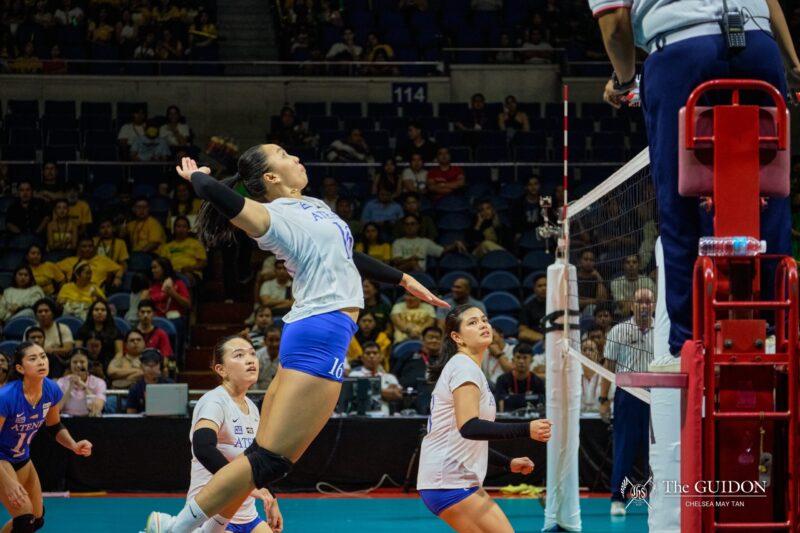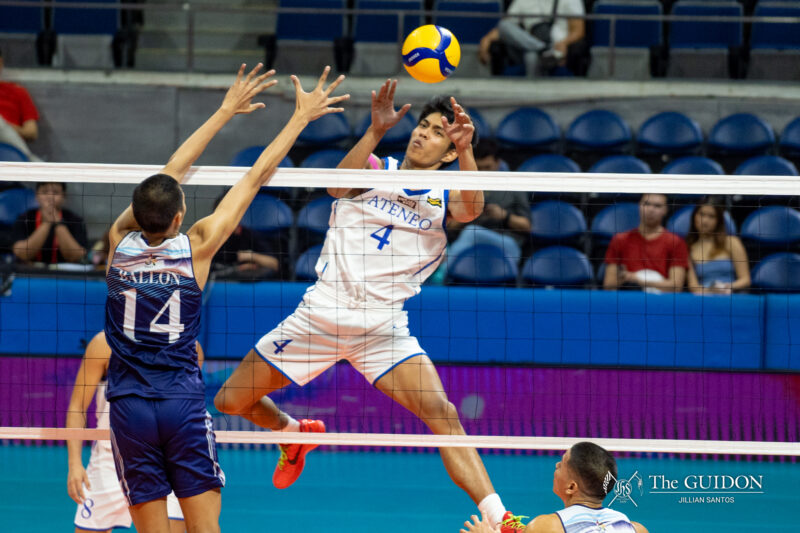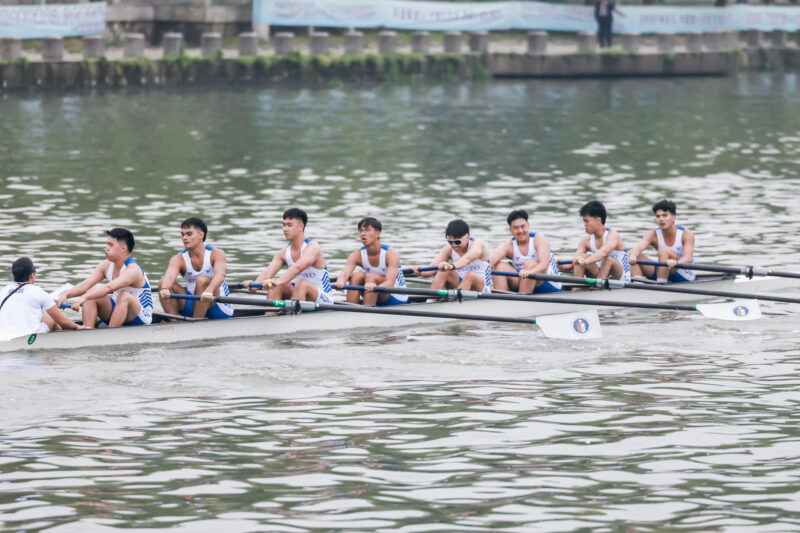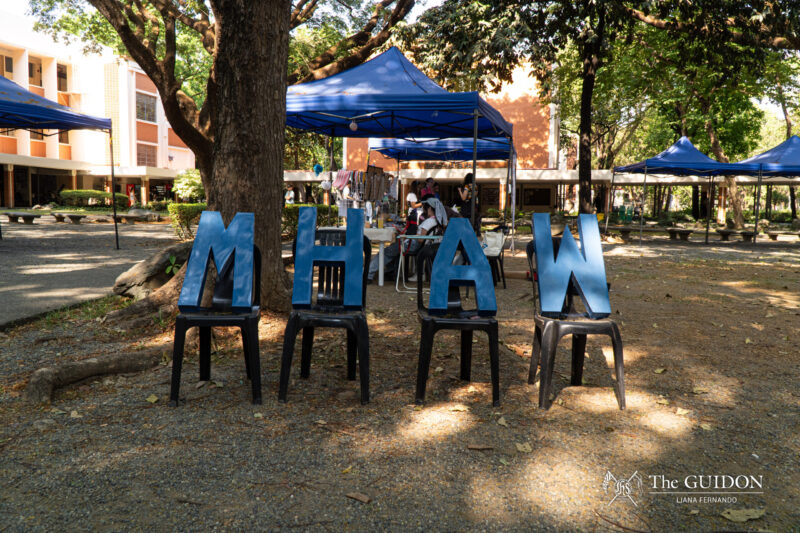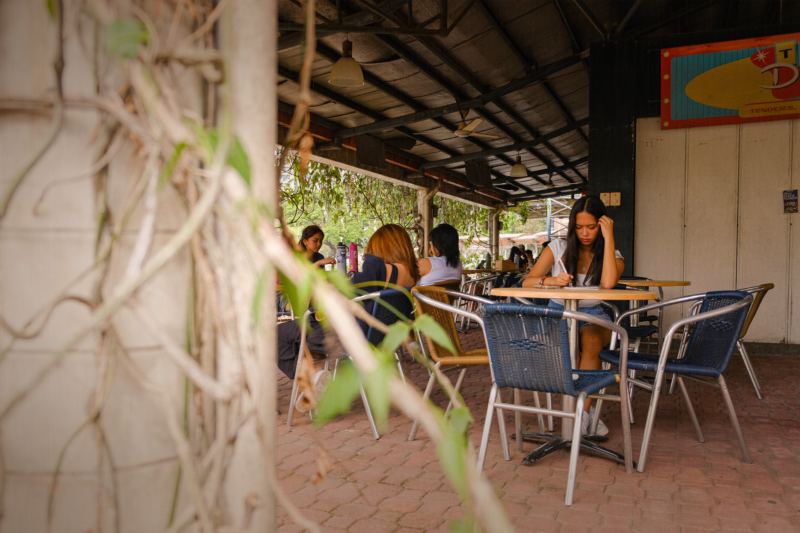Jesuits have been part of Ateneo history in all of its 150 years of existence. Now we take a look at three Jesuits—a former athletics director, a relentless basketball fan, and a loyal cheerleader—who have different perspectives and roles in the great Atenean passion.
Second father
Fr. Raymond Holscher, SJ
He has been a father of both the faith and several athletes in Ateneo history. Now a second father to juvenile kids, Fr. Raymond Holscher, SJ remains a notable figure with tremendous influence and bonds with the King Eagles of the past.
Fr. Ray was 21 years old when he first came to the Philippines. “I went here and studied in the Ateneo until I graduated,” he says. After spending time in Cagayan de Oro and his ordination in 1972, he had his first encounter with Ateneo sports when he was handed the coaching reins of the softball team.
By 1975, he was appointed the high school athletics director and was soon chosen as the collegiate athletics director. When the Ateneo shifted to the UAAP in 1978, Fr. Ray was made the university athletics (UA) director.
He recalls how different things were when he was still the UA director. “It is just now that the alumni are backing them [the teams] up. When we started at the UAAP, we didn’t have enough funds for scholarships and property improvement for the players. But we pulled through.”
Fr. Ray also remembers Ateneo’s days in the National Collegiate Athletics Association (NCAA) when basketball, as he says, was chaotic. “Fights would always break out after the games,” he says. He was among those who promoted the shift from the NCAA to the UAAP.
In fact, he says the fights were so frequent that Araneta Coliseum was closed off from spectators during a game between Ateneo and San Beda College.
“It was a very memorable game. There were only like 50 people watching. The whole stadium was empty. It was weird but very funny,” Fr. Ray says, laughing.
The entry of women into the University helped a lot in disciplining the men and toning down the violence. “Since they wanted to impress the ladies, the men got more orderly during the games,” he says.
Fr. Ray also shared fond memories with the Blue Eagles, since his office was in the same building where the team practiced. “The players would always hang out by the office, and would sometimes watch American sports like NBA with me at the office, since TV was a limited luxury back then,” he says.
Fr. Ray adds that the Blue Eagles—whatever generation they may be—is a model team not only for basketball, but also for team work and excellence. After years of guiding Ateneo’s teams, he believes that basketball is a way of life for Filipinos and Ateneans.
Heart of a fan
Fr. Adolfo Dacanay, SJ
Moments before the Blue Eagles clinched last year’s title, the whole Ateneo gallery was getting ready to celebrate at the final buzzer. If you carefully observed the patron section, you would notice someone wearing a Nonoy Baclao jersey over a polo barong, its owner flashing a wide grin on his face.
He was no other than Fr. Adolfo Dacanay SJ, chairperson of the Theology Department, as well as one of the Eagles’ biggest fans. But contrary to what most people believe, this Bacnotan, La Union native didn’t begin his fandom like other school diehards.
His early days saw him enter the Vigan Seminary for high school and the Loyola Schools via the San Jose Seminary. This call to join the Jesuits, however, did not coincide with the call to cheer for the Blue and White.
Fr. Dacanay recalls being a fan of the Philippine Basketball Association with rare cameos in Ateneo games. “There was nothing regular or passionate with the way I was watching the games before,” he says.
This all changed in Ateneo’s championship run in 2002 where he truly appreciated watching the Blue Eagles. “I learned that basketball is a very cardiac experience. Then I watched more live games,” he says.
The excitement is not the only thing that draws this Jesuit to games. Over time, he built solemn relationships with the players. Dacanay recalls befriending former Blue Eagle Macky Escalona. This tradition of friendship continues to the current crop of players.
“It does make a difference, especially if you know the player. Because the way you are cheering now is not just for the school,” he points out. But he made clear he doesn’t play favorites when it comes to the athletes.
Fr. Dacanay makes it a point to watch games when he can, and is sure to be there for the biggest games, especially against rivals La Salle. He believes rivals, like those in green, should be considered equal. “But of course, it’s better if we win,” Fr. Dacanay says laughingly.
In his day job as a teacher of theology, he is equally legendary. Dacanay admitted that he checks papers and quizzes during games while waiting for the opening buzzer or during timeouts.
There is a rumor among students and alumni that the game’s progress and result affect the way he grades and teaches in class. “All urban legends!” he exclaims.
Still, his status as an educator comes before being a fan. He does not believe in compromising academic standards in order to win championships. He talks about being proud of our athletes for balancing both academics and training.
This is one of the reasons he takes pride at being part of the Ateneo. He sees success and pride not coming at the expense of values.
Beyond watching the game, Fr. Dacanay participates actively by cheering on the squad. He even sees himself having to rally the quieter members of the patron section, even if sometimes it is to no avail. “In terms of rallying the troops when the team is trying to catch up, it’s hard and I won’t get very far with the ‘zombies’ around,” he says.
Despite this, he still believes the Blue Eagles have the best crowd behind them, even though the stadium is not filled with what he calls “ideal fans.”
“An ideal fan doesn’t just watch the big games like the La Salle-Ateneo game or the finals, but all games. I hate it when the team is losing and some of the crowd are already leaving,” he says.
“An ideal fan doesn’t just share in the team’s glory. An ideal fan must stay with the team to the bitter end.”
In the near future, Fr. Dacanay still sees himself occupying that seat at the games as one of the Blue Eagles staunchest supporters.
“I suppose I’ll watch basketball forever, until I get a heart attack from watching the game,” he says.
The fire never dies
Fr. Bert Ampil, SJ
Legendary cheerleader Fr. Bert Ampil, SJ, in an interview with The GUIDON, exclaims “Fight!” in a show of what school spirit means for him. “They [fans] don’t cheer like that anymore,” he says.
His eyes getting teary and a sense of nostalgia overcoming him, Fr. Bert can’t help but shake his head. He talks about the great post-war Ateneo team led by Luis Francisco “Moro” Lorenzo, who would score over 30 points on almost any given night, dazzling spectators while leading the often-underdog Ateneo team. He remembers being inspired by that team. That was when his love for cheerleading began.
“The spirit that we had before is still evident in cheering nowadays, but the physical setup is too big,” he says.
He recalls tightly-packed gymnasiums back in the day wherein fans were shoulder to shoulder and one could really get into the fighting spirit. “It was infectious,” he says. “You can feel that the whole school was behind your cheer. Ateneo won Best Cheering Squad for five consecutive years.”
That fervor during the games made him a cheerleader. “There was a symbiotic relationship between the basketball team and the cheerleading team,” he says. “The cheering squad takes part in the loss and shares in the glory of the victory.”
He talks about how the athletes then were able to have a connection with the crowd, a certain kind of control, like what Moro Lorenzo had. He explains that this same power to control the crowd is wielded by the cheerleaders.
“There is that essential role that a cheerleader has…he should be able to kindle the spirit. A cheerleader who doesn’t look at the audience in the face loses it,” he says.
Times have changed and Fr. Bert doesn’t feel that his approach towards cheerleading still exists. “I find it hard to watch now. Is there still a point in cheering? Does the crowd still get fired up? I think cheering has turned into a show. Something was lost during the times,” he says.
Whatever it is that was lost, Fr. Bert still believes that we can get it back. He knows a lot of heart is poured into collegiate sports, and he enjoys seeing the Ateneo-La Salle rivalry because he saw it blossom.
“It was a very healthy competition. Maybe because we saw a little bit of ourselves in them? And in terms of the games, whenever we win against them, it feels good. If we lose, masakit [it hurts],” he says.
But Fr. Bert also believes in cheerleading beyond the hardcourt. He says students can pick up useful character-building from cheerleading.
“The nation also needs cheering. Not just a pat on the back, but cheering up,” he says.

